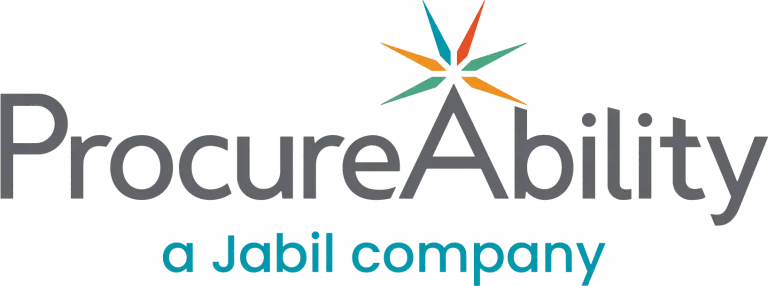The Future of AI in Procurement:
Transforming theory into practice

Generative artificial intelligence (AI) is transforming work across industries worldwide. In creative fields, large language and image AI models generate automated content. In manufacturing, AI supports product design, optimizes processes, and improves quality control. In healthcare, it enhances patient care through better diagnosis and information sharing.
To explore AI’s impact on procurement, ProcureAbility and our AI partner, dSilo, present the co-authored Insights series, “The Future of AI in Procurement.”
In our previous blog, we explored how companies use “passive” AI with large language models (LLMs) to gain insights from data. The value still depends on busy human teams, rather than acting automatically.
In this third installment, Transforming Theory into Practice, we show how AI can link strategic and tactical procurement processes while reducing manual work. We highlight AI’s transformational potential in procurement and why the industry is especially suited for adoption at an unprecedented scale.
As you might expect, early adopters are already showing creativity in leveraging generative AI. As noted before, generative AI isn’t fundamentally changing procurement, but it is closing gaps and boosting efficiency. These benefits extend beyond procurement—some clients apply AI to commercial contracting to speed up sales cycles and uncover revenue-enhancing insights.
In this blog, we’ll share generative AI use cases that could inspire your organization, showcasing the most exciting examples we’ve seen and supported, along with innovative ideas for the near future.
Contract redlining
When a company transacts on the supplier’s—or client’s—paper, the first step is for legal to review and redline the document until the language is acceptable. So far, this has been a manual process. It consumes costly resources and delays agreement execution.</vc_column_text>
Now, LLMs are tackling this inefficiency. They compare proposed language with the company’s standards and suggest edits to meet requirements. These suggestions still need review before going back to the supplier or client, but the process is far more efficient. As LLMs continue to learn, reviews will take less time—and may eventually become unnecessary.
One client suggested another idea. For repetitive issues like limitation of liability or indemnification, the tool could track how differences were resolved in past negotiations. Reviewers could then select from these examples instead of relying on memory—especially useful when multiple lawyers are involved or personnel changes occur.
Another client used this LLM capability to completely restructure their clause library and optimize fallback positions and negotiation strategy. They started with simple P (Price) × Q (Quantity) contracts, where market conditions, prior negotiations, and risk parameters were limited.
Over time, the approach expanded to complex, labor-based contracts with varying risk profiles. After twelve months of iterative, human-centered training, the platform now handles even the most complex clause management.
Today, it delivers recommendations far more autonomously, reflecting a year of continuous improvement.
Contract summaries
Stakeholders working with suppliers need to understand relevant parts of the contract for their daily tasks. They don’t want to sift through hundreds of pages to find the information they need. In some cases, you also don’t want to share confidential details, like pricing.
Generative AI can create contract summaries that pull out the specified operational information required. It can also generate different summaries depending on the role of the user. As a result, A/P only sees what it needs to, while maintenance’s view is similarly customized.
Consider a railway operator that maintains a fleet of engines and cars. Their uptime metrics currently focus on repair and return to service. If maintenance crews have easy access to warranty information in supplier contracts, they can quickly decide whether to repair an item or replace it and send the defective one back under warranty.
One of ProcureAbility’s clients uses this capability to manage internal firewalls and conflicts of interest among stakeholders, legal, risk, and procurement teams. It streamlines information sharing and eliminates version control problems and potential gaming issues.
Generating amendments
The growing number of regulations requiring specific contract terms challenges both legal and risk teams. This is especially true for evergreen contracts or newer agreements that didn’t anticipate the rules.
These required clauses aren’t typically captured as metadata in a CLM system. As a result, risk management often has no visibility into whether contracts include clauses for GDPR, DORA, Prop 65, Dodd-Frank, LKSG, CSRD and others.
In the past, checking for these risk management clauses manually was nearly impossible. Now, LLMs can review all contracts and spot missing clauses. Generative AI can draft amendments with the necessary language and either send them to the contract administrator for review or directly to the supplier.
At ProcureAbility, we are seeing a lot of point solution approaches with our customers to solve this problem, considering CLM product roadmaps many times don’t allow a custom solution. We have worked with some of our clients to build the unique, one-time utility to take care of historical information using technology and using Gen AI to keep it learning and maintained.
Invoice corrections
In our last blog, we discussed using LLMs to match contracts with invoices and flag pricing, terms, or discount discrepancies. With passive AI, these issues are flagged, but the A/P clerk must still resolve them. Now, one customer is using generative AI to draft emails to suppliers, explaining the discrepancy and requesting a resolution, like reissuing the invoice or updating systems with the correct pricing.
One of ProcureAbility’s clients uses LLMs to review around 500,000 documents. The system identifies key fields for decision-making and flags future issues. It also handles invoices with complex deliverables and works with P2P systems to optimize PO structures, reducing reconciliation effort. Recommendations are provided at both the transaction level and the functional (change management) level.
Price flexibility
This use case, driven by a sales leader, is also relevant for procurement. The company wants to identify contracts that allow cost reductions or permit price increases, along with any limitations or timing requirements. While sales focuses on maximizing revenue, procurement can use this insight to find opportunities to reduce costs within contract terms.
Looking ahead
This list of use cases is far from exhaustive. It grows daily as organizations learn more about generative AI and explore how to apply it to their most pressing challenges. As awareness increases, leaders see how their organizations can gain competitive advantages through greater efficiency and effectiveness.
If your organization already uses passive AI, it’s time to consider generative tools. They can handle rote, repetitive tasks and free up resources for higher-value work that is often done too infrequently today.
In the next installment of our “Future of AI in Procurement” series, we’ll examine the human impact of generative AI and how procurement professionals can adapt. We’ll continue exploring AI’s role in enhancing procurement capabilities, highlighting how ProcureAbility and dSilo are helping clients take generative AI to the next level.



